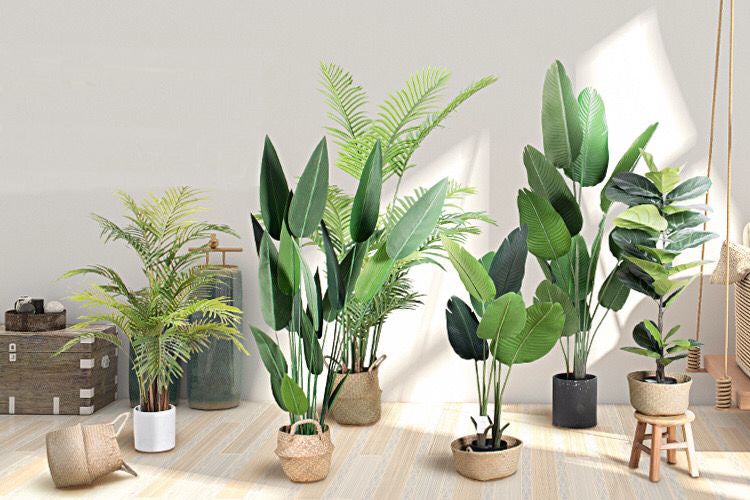Plant hardiness zones are an essential tool for gardeners and landscapers. They help us understand which plants are best suited to our region's climate and temperature conditions. Knowing your plant hardiness zone can make a big difference in the success of your garden, whether you're growing vegetables, flowers, or trees. In this article, we'll explore what plant zones are and how they impact plant growth, as well as introduce some popular artificial trees like the artificial olive tree and the artificial fiddle fig tree.
Understanding Plant Hardiness Zones
Plant hardiness zones were created by the United States Department of Agriculture (USDA) to provide a system for gardeners to determine which plants can grow in which regions based on temperature. There are 13 plant hardiness zones in the United States, each designated by a range of minimum average annual temperatures.
For example, Zone 1 covers regions with minimum average annual temperatures of -60 to -50 degrees Fahrenheit, while Zone 13 covers regions with minimum average annual temperatures of 60 to 70 degrees Fahrenheit.
Determining Your Plant Hardiness Zone
To determine your plant hardiness zone, you'll need to consult a hardiness zone map. The USDA provides an interactive map on its website that allows you to search by zip code or state.
You can also consult local nurseries, garden centers, or agricultural extension offices. These organizations are often well-versed in the local climate and can provide valuable insights into which plants are best suited to your region.
Impact of Plant Hardiness Zones on Plant Growth
Plant hardiness zones have a significant impact on plant growth. Plants that are not well-suited to a particular zone may struggle to survive, leading to stunted growth, disease, or death.
Plants that are well-suited to a particular zone, on the other hand, are more likely to thrive. They're more likely to establish strong roots, produce abundant foliage and flowers, and resist disease and pests.
Artificial Trees for Challenging Plant Zones
If you live in a challenging plant zone, such as one with harsh winters or extreme heat, you may struggle to find live trees that can thrive in your region. Fortunately, there are many beautiful and realistic artificial trees available that can add beauty to your landscape without requiring the same level of care and attention as live trees.
Artificial Olive Trees
Artificial olive trees are a popular choice for those looking to add a touch of the Mediterranean to their landscape. These trees are designed to look just like real olive trees, with textured trunks, detailed branches, and realistic-looking leaves.
One of the benefits of artificial olive trees is that they're not affected by weather or climate conditions. They're not vulnerable to pests, disease, or extreme temperatures, so you can enjoy them year-round without worrying about their health.
Artificial Fiddle Fig Trees
Artificial fiddle fig trees are another popular choice for those looking for a low-maintenance, high-impact tree. These trees have large, lush leaves that provide a tropical feel to any landscape.
One of the challenges with live fiddle fig trees is that they're notoriously finicky. They require specific conditions to thrive, including high humidity, bright but indirect light, and consistent watering.
Artificial fiddle fig trees, on the other hand, require no special care. They can be placed in any room of your home, office, or outdoor space, and they'll look beautiful all year round.
In Conclusion
Plant hardiness zones are a critical factor to consider when selecting plants for your garden or landscape. Understanding your zone can help ensure that your plants thrive and produce abundant foliage and flowers.
For those living in challenging plant zones, artificial trees offer a low-maintenance, high-impact option for adding beauty to your landscape. The artificial olive tree and artificial fiddle fig tree are just two examples of the many realistic and beautiful artificial trees available.
Whether you choose to go with live plants or artificial ones, the key is to select plants that are well-suited to your zone and to provide them with the proper care and attention they need to thrive. With the right plants and care, your garden or landscape can be a beautiful and thriving oasis for years to come.


No comments yet